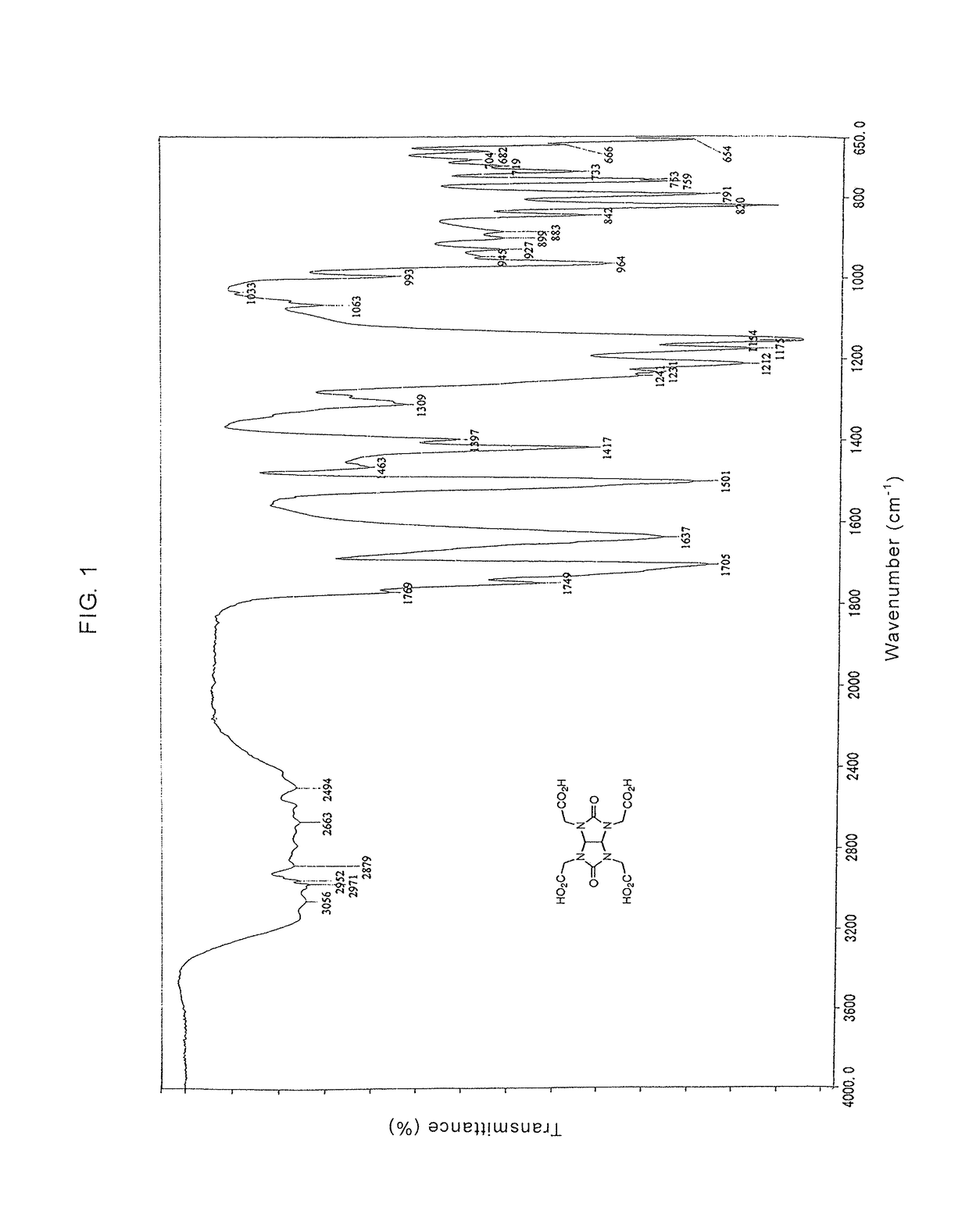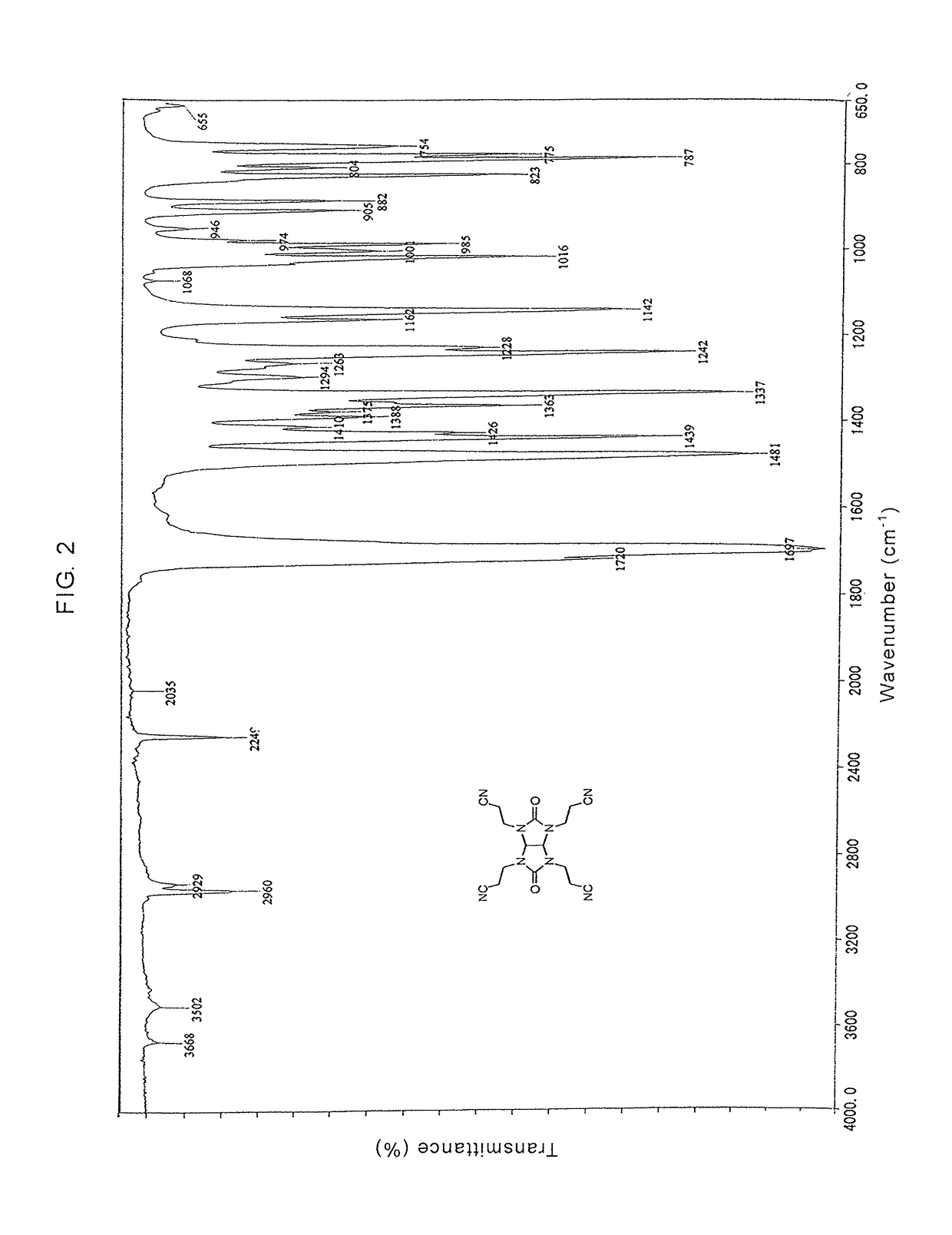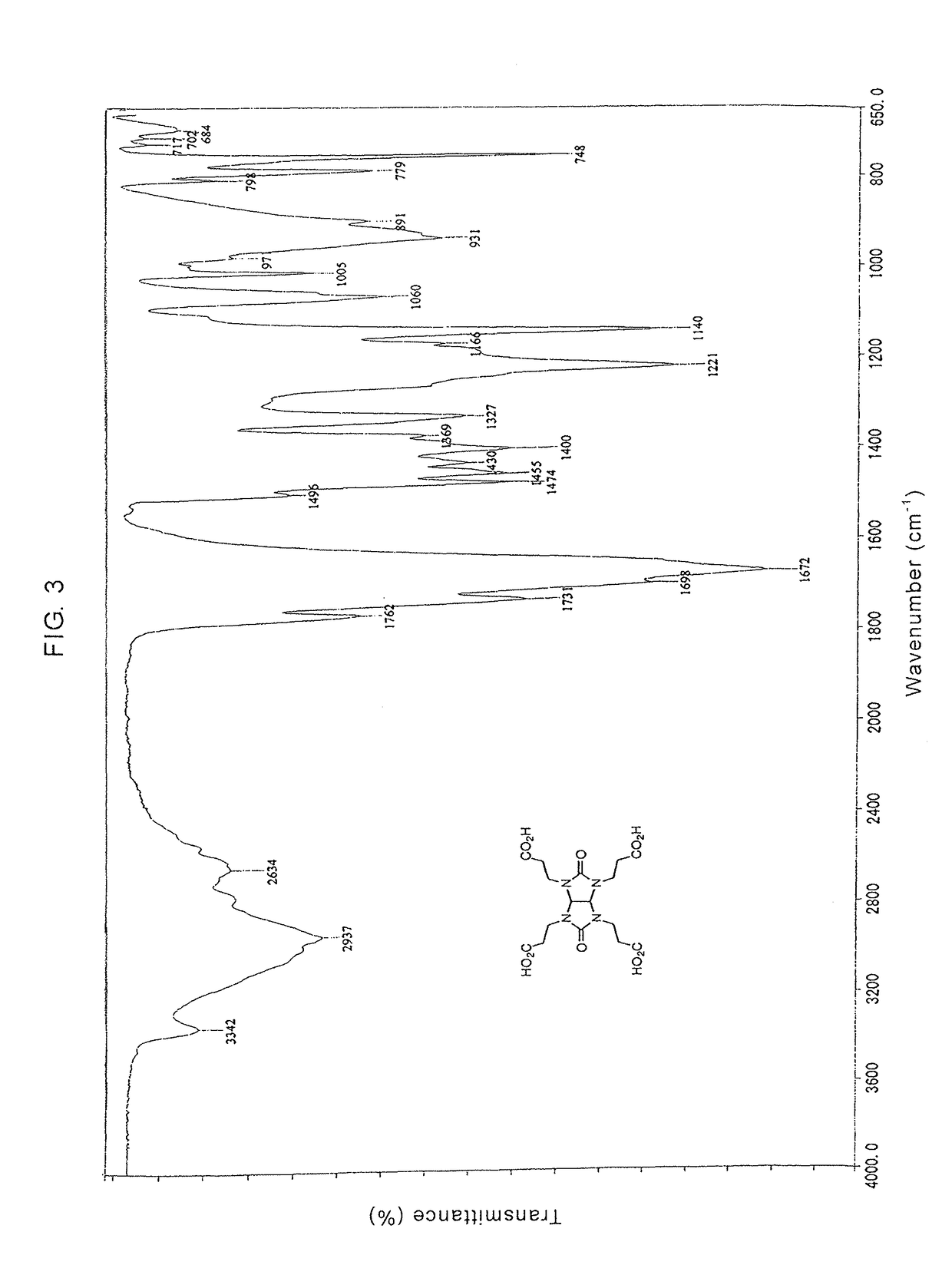Glycolurils having functional groups and use thereof
a technology of glycolurils and functional groups, which is applied in the field of glycolurils having a functional group, can solve the problems of unfavorable use of glycolurils as curing agents, so as to reduce the fluidity of the coated film, reduce the fluidity, and reduce the effect of weigh
- Summary
- Abstract
- Description
- Claims
- Application Information
AI Technical Summary
Benefits of technology
Problems solved by technology
Method used
Image
Examples
example 4
[0364]As shown in Table 2, a hydrogenated bisphenol A-type epoxy resin (YX8000 produced by Mitsubishi Chemical Corporation, abbreviated as YX8000 in Table 1, 80 parts by mass) was blended with a curing agent, 4-methylhexahydrophthalic anhydride / hexahydrophthalic anhydride (mixture at a weight ratio of 70 / 30, Rikacid MH-700 produced by New Japan Chemical Co., Ltd., abbreviated as MH-700 in Table 1, 120 parts by mass), a curing accelerator, tetra-n-butylphosphonium-o,o-diethylphosphorodithionate (HISHICOLIN PX-4ET produced by Nippon Chemical Industrial Co., Ltd., abbreviated as PX-4ET in Table 1, 0.5 part by mass) and a crosslinking agent 1,3,4,6-tetraglycidylglycoluril (abbreviated as TG-G in Table 1, 20 parts by mass) and the mixture was kneaded, to give an epoxy resin composition.
[0365]The epoxy resin composition was heated at a temperature of 120° C. for 6 hours to give a cured product. The glass transition point (Tg), bending modulus and bending strength of the cured product were...
example 1
[1022]A resin composition having a proportion of the main agent to the curing agent of 1.0 as the ratio of Si—H group / allyl group and containing a silica filler in an amount of 60 mass % was prepared to have a composition shown below.
(1) Main agent: (Preparative Example 1), 58.0 parts by mass
(2) Curing agent: (Preparative Example 2), 37.0 parts by mass
(3) Curing accelerator: chloroplatinic acid (octyl alcohol-modified solution of chloroplatinic acid (platinum concentration: 2 mass %)), 0.5 part by mass
(4) Inorganic filler: silica filler, 157.8 parts by mass
(5) Curing inhibitor: (ethynylmethyldecylcarbinol), 0.5 part by mass
(6) Colorant: acetylene black (Denka Black, manufactured by Denka Company), 3.0 parts by mass
[1023]These components (1) to (6) were stirred and mixed in a planetary mixer, kneaded thrice with three rolls arranged to have a pitch of 80 μm and mixed additionally under vacuum in the planetary mixer, to give a liquid thermosetting resin composition.
example 2
[1024]A resin composition having a proportion of the main agent to the curing agent of 1.8 as the ratio of Si—H group / allyl group and containing a silica filler in an amount of 60 mass % was prepared to have a composition shown below.
(1) Main agent: (Preparative Example 1), 43.9 parts by mass
(2) Curing agent: (Preparative Example 2), 51.1 parts by mass
(3) Curing accelerator: chloroplatinic acid (octyl alcohol-modified solution of chloroplatinic acid (platinum concentration: 2 mass %)) 0.5 parts by mass
(4) Silica filler, 157.8 parts by mass
(5) Curing inhibitor: (ethynylmethyldecylcarbinol), 0.5 part by mass
(6) Colorant: acetylene black (Denka Black, produced by Denka Company Limited), 3.0 parts by mass
[1025]These components (1) to (6) were stirred and mixed in a planetary mixer, kneaded thrice with three rolls arranged to have a pitch of 80 μm and mixed additionally under vacuum in the planetary mixer, to give a liquid thermosetting resin composition.
PUM
| Property | Measurement | Unit |
|---|---|---|
| heat resistance | aaaaa | aaaaa |
| thickness | aaaaa | aaaaa |
| temperature | aaaaa | aaaaa |
Abstract
Description
Claims
Application Information
 Login to View More
Login to View More - R&D
- Intellectual Property
- Life Sciences
- Materials
- Tech Scout
- Unparalleled Data Quality
- Higher Quality Content
- 60% Fewer Hallucinations
Browse by: Latest US Patents, China's latest patents, Technical Efficacy Thesaurus, Application Domain, Technology Topic, Popular Technical Reports.
© 2025 PatSnap. All rights reserved.Legal|Privacy policy|Modern Slavery Act Transparency Statement|Sitemap|About US| Contact US: help@patsnap.com



